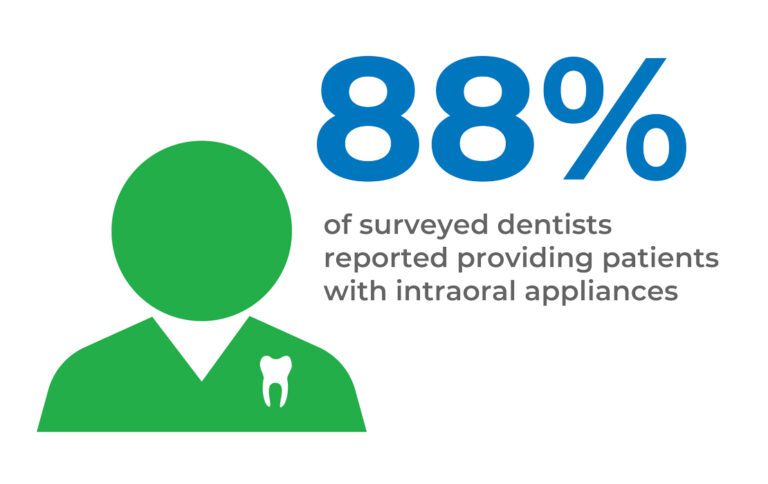Construction mainly follows conventional methods
Intraoral appliances are commonly used in dental practice, and many members of the dental team are involved in the manufacturing process, according to Report of the ADA Clinical Review Panel published in the December issue of The Journal of the American Dental Association.
The report, which includes responses from 286 dentists who are members of the ACE Panel, found that 88% of respondents provided patients with intraoral appliances other than removable partial dentures. More than half offered whitening trays, Essix flippers or retainers, braces, sports mouthguards, orthodontic retainers, fluoride trays and clear aligners. Most dentists said they offer intraoral appliances as treatment options for their patients daily or a few times a week.
Almost all responding dentists reported that they were personally involved in providing intraoral appliances to their patients, and 72% said that their dentists were involved in the impression-taking and model-making processes.
Dentists educate patients about appliance use through multiple approaches, including talking to them, providing printed materials, or showing them examples, and most said continuing education courses contributed to their own ability to provide intraoral appliances.
“With 88% of respondents providing intraoral appliances regularly and 90% having attended continuing education courses on their use, this shows a trend that shows they are becoming part of routine dental practice, both with increasing applications and with improvements in workflows and manufacturing technologies,” said Kevin Frazier, DMD, one of the report’s co-authors. “There is likely to be continued and expanding interest in relevant learning opportunities related to technological advances and the increasingly diverse list of applications for intraoral devices.”
While applications for intraoral devices have expanded, responses to the ACE Panel report suggest that dentists use a combination of conventional and digital workflows to manufacture the devices, with conventional methods outnumbering digital methods by about 4 to 1. The most common practice changes respondents reported having in the past five years related to intraoral devices related to intraoral scanning and the increased variety of intraoral devices offered to patients.
Dentists can view the full ACE Panel report online and download the PDF at JADA.ADA.org .
ACE Panel reports include data from ADA member dentists who have registered to participate in brief surveys related to dental products, practices, and other clinical topics. The ADA Council on Scientific Affairs’ ACE Group Oversight Subcommittee prepares the reports with the staff of the ADA Institute of Science and Research.
The reports offer ADA members a way to understand the views of their peers on various dental products and practices, providing insight and awareness that can benefit patients and the profession.
Members are invited to join the ACE Panel and contribute to upcoming surveys, which occur no more than once every few months and typically take five to 10 minutes to complete.
To learn more or join the ACE Panel, visit ADA.org/ACE .


